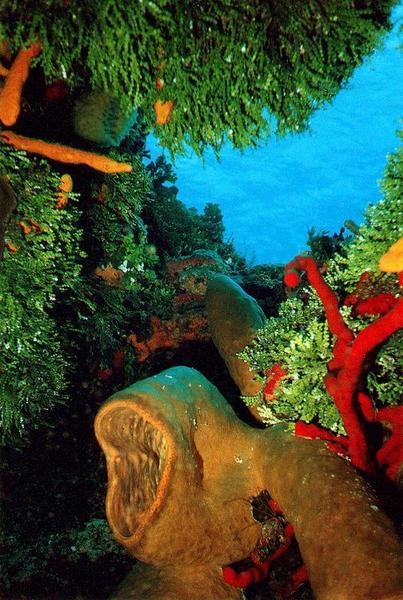As you know, if you look at the aperture knob on your MX-10, you'll notice that there are 2 settings (f/4.5 and f/11) outlined in orange, with a little lightning bolt symbol. These 2 settings are the only ones which turn on the internal flash. As Dee said, NEVER use these underwater! Using the others, which are white text on the gray knob, will not fire the internal strobe.
As for the YS-40, the camera has no way (or reason) to know whether the YS-40 is there or not. It just sends out the triggering pulse no matter what. There is no communication from the YS-40 back to the camera. With the strobe in the "on" position, exposure is accomplished manually - by using the correct aperture for the distance and film being used. The YS-40's "auto" position uses the strobe's meter to read the reflected light and shut off the strobe when it determines correct exposure. However, since there's no coupling going on between camera and strobe, it must assume that the camera's aperture is set at one particular f-stop. In fact, it comes with a sticker giving the aperture to be used for ASA 100 and 400 film. So, the "auto" setting is auto-exposure, but only if the camera is set at that one single aperture. This is somewhat limiting, and Ive had excellent results using manual mode.
You should indeed experiment with it in manual mode ("ON" instead of "AUTO") and vary the aperture to match subject distance. The formula is (for ASA 100 film): f-stop = guide
number of strobe / distance in feet. The YS-40A has a guide number of about 16 underwater, so you can go from there. The key is practice, practice, practice, and recording what you do. If you can master pure old manual photography, you've got it made. Since there aren't too many variables with the MX-10, it's not too intimidating to do so. Also, when you find a good
subject, take several shots, bracketing up and down an f-stop each way. Again, practice and shoot lots of film.
I've always shot ASA 100 film in an MX-10 or Motormarine. While the YS-40 is indeed not super-powerful, as long as you stay within reasonable distances it does great. In fact, a photograph I took at night with an MX-10, 20mm lens,
MXTENDER prototype, and using Fujichrome 100 film was just added as part of a permanent Flower Gardens exhibit at the Aquarium of the Americas in New Orleans. It was exposed very well, using just the YS-40. (I'll add it to my
gallery as soon as I get the slide back from them.)
I hope this helped you with your questions. In addition, here are a few general tips on photography:
Don't worry about ditching, adding, or changing gear. Most of what makes a good (or bad) photograph is the person behind the camera, not the equipment used. Too many people get caught up in the gadgets, and forget about capturing the moment itself.
The keys are reading, learning, and practicing. General photography books are priceless, for above or below water photography. In addition, there is a vast amount of information available on the Internet. Just one example is
http://www.utahdiving.com/photos/pic-clas.htm. It's a complete mini photo lesson, and talks about the MX-10, Motormarine, and Nikonos V.
Read, listen to the advice of those who know, shoot a lot of film, and always record what you do. Shoot upward; don't take pictures down at "stuff on the sand" like most people do. Also, take pictures vertically ("long-ways") - most people don't. Look at GOOD photographers' work, and see what they did and how they did it. Learn the principles of composition, and use them to frame a picture which will attract someone's eye. Look for the unusual, the colorful, the majestic, the beautiful. Get CLOSE to your subject. Get CLOSE to your subject. Get CLOSE to your subject. Bracket, bracket, bracket.
Good luck, and let us know how it goes!
Greg Bunch
gbunch@gbundersea.com
http://www.gbundersea.com




